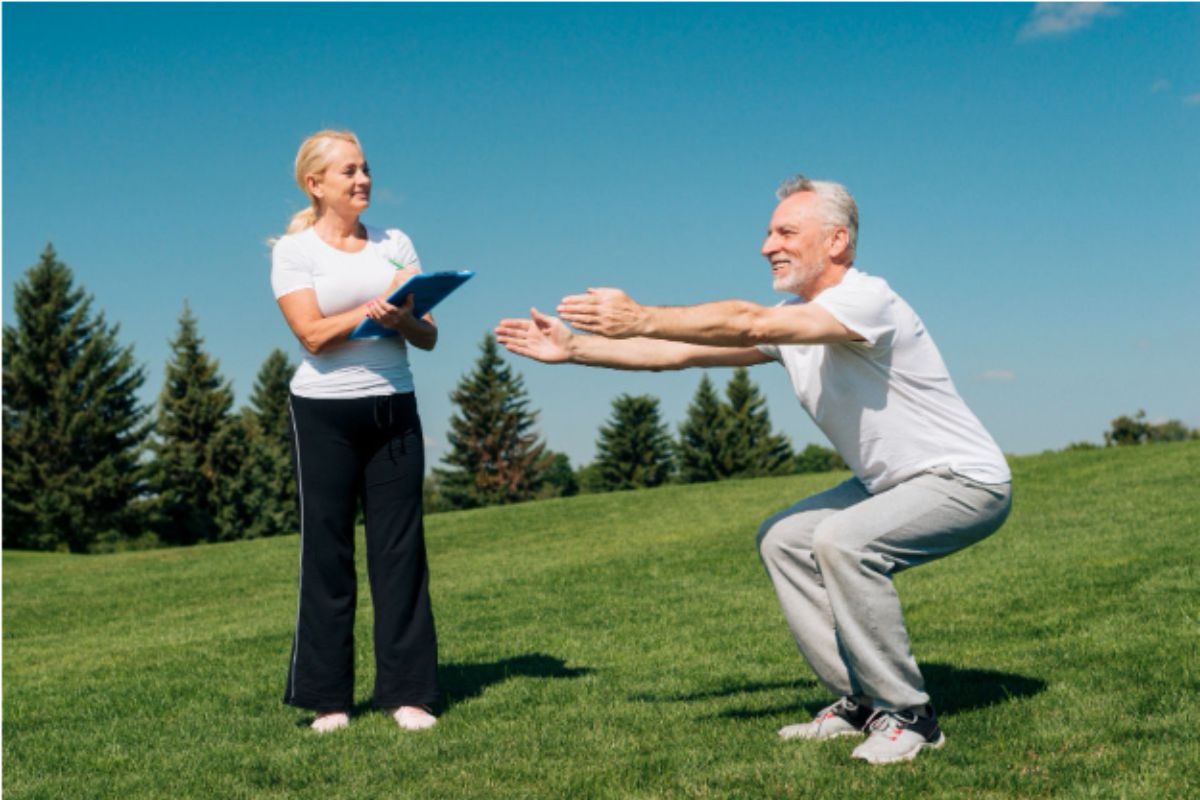The Top 7 Benefits of Exercise for Older People

As we grow older, it's natural to lose the stamina and agility we had in our youth. But this doesn’t mean slowly turning into a couch potato. You can regain your independence and mobility even in your old age with regular physical activity.
The Centers for Disease Control and Prevention (CDC) states that regular, moderate physical activity is linked to improvements in mental health, emotional and psychological well-being, social well-being, and cognitive function, regardless of gender. This even works for those with medical conditions like arthritis, heart disease, obesity, and high blood pressure.
| Regular physical activity levels among older adults are still below the recommended 150 minutes per week. Globally, 21.4% of adults are physically inactive, meaning one in every four to five adults does not meet the current WHO recommendations for physical activity. |
This figure is on the rise as individuals discount the power and benefits of exercise for older people. In this blog, we have covered all the potential reasons the elderly need to start working out today. Also, we have enlisted types of exercises that any older person can do easily.
Benefits of exercise for older people
Here are the potential benefits of physical exercise for older people:
Improved Cardiovascular Health
| According to the American Heart Association, physically active adults have a 30-40% lower risk of cardiovascular disease compared to those who are inactive. |
Regular aerobic exercises like walking, swimming, and cycling increase the heart rate and improve circulation. These activities strengthen the heart muscle, making it more efficient at pumping blood throughout the body. It leads to a strengthened cardiovascular system, reduced blood pressure, lower cholesterol levels, and decreased risk of heart disease and stroke.
Enhanced Muscle Strength and Bone Density
Men and women start to lose bone density as they age, especially post-menopausal women, who lose up to 2% each year.
What’s the solution? Weight-bearing and resistance exercises!
These exercises create small stresses in the muscles and bones, which helps them expand and rebuild and results in increased muscle mass and bone density. Doing these exercises regularly even helps strengthen the muscle mass around the joint, leading to more strengthened joints. This helps prevent osteoporosis, reduces the risk of fractures and falls, and provides better support for joints.
Better Balance and Coordination
Balance-focused exercises like tai chi and yoga enhance proprioception (awareness of body position) and strengthen the core and lower body muscles. These exercises involve slow, controlled movements that improve stability and coordination and result in reduced risk of falls and related injuries.
Mental Health Benefits
In older age, it becomes common to experience depression and anxiety. This could be due to current physical or medical conditions or owing to the loneliness that comes from staying alone. Well, no more! The elderly can improve their mood and fight mental stresses with physical activity.
Exercising stimulates the release of endorphins and other neurotransmitters that aid in reducing stress and anxiety. Elderly exercising also promotes neuroplasticity and brain health by increasing blood flow to the brain, which results in the development of new neurons, contributing to improving mental health and cognitive function.
Improved Sleep Quality
Insomnia is a common problem faced by adults. But with regular physical activity this state of sleeplessness can be reversed.
Research from the Sleep Foundation indicates that 150 minutes of moderate to vigorous activity per week can improve sleep quality by 65%.
Physical activity helps regulate the sleep-wake cycle by promoting the release of sleep-inducing chemicals like melatonin. This helps older adults fall asleep faster and enjoy a deeper, more restful sleep.
Enhanced Immune Function
| A 2018 study by Harvard Medical School reports that regular moderate exercise can reduce the risk of upper respiratory tract infections and enhance immunity by 40%. |
This is because moderate exercise boosts immune cell circulation, enhancing the body's ability to fight off infections. It also reduces inflammation and improves immune regulation, which means you recover from diseases quicker and have a low chance of falling ill.
Chronic Disease Management
Exercise offers a protective effect against numerous chronic illnesses, such as cardiovascular disease, colon cancer, diabetes, obesity, and hypertension. This is because with regular exercising, your health improves, blood sugar levels are regulated, and joint flexibility and strength are enhanced.
Increased Independence
This is likely the most significant benefit of exercising in older age. While companionship care services are available to help, many older adults still prefer to perform their tasks independently as much as possible. This is the reason physical activity is vital, as with regular flexibility and strength training, one can regain mobility.
Enhanced Longevity
Active older adults tend to live longer and enjoy a better quality of life compared to their sedentary counterparts. This fact is supported by a study published in the British Journal of Sports Medicine that found that regular physical activity can increase life expectancy by 3-5 years.
Types of Exercises for Older Adults
Here is the recommended physical activity that older adults can do easily. Check out the list to know more:
- Aerobic Exercises
Aerobic exercises, also known as cardio, improve cardiovascular health, increase stamina, and enhance lung capacity. These activities are typically sustained for longer periods and boost the heart rate. Some easy-to-do aerobics include walking, swimming, and cycling.
- Strength Training
If some older age wish to build muscle mass and strength, they should go for strength training exercises like weight lifting, resistance bands, squats, push-ups, lunges, etc. These elderly exercises help maintain bone density, support joint health, and aid in performing daily activities with ease.
- Balance Exercises
Balance exercises like tai chi, standing on one leg, heel-to-toe walking, etc, are helpful in preventing falls, which are a leading cause of injury among older adults. These exercises improve stability, coordination, and proprioception.
- Flexibility and Stretching Exercises
Yoga and stretching exercises offer a low-impact activity that is gentle on the joints while effectively strengthening muscles, stabilizing the core, improving flexibility, and fortifying bones. Introductory yoga and flexibility classes, especially those designed for older adults, provide options for seated and standing poses, making them accessible to all.
By incorporating a variety of exercises into their routine, older individuals can maintain their mobility, strength, and overall quality of life. For personalized companionship care services that support your loved one's independence and well-being, contact Family Ties Home Care today. Let us help your family member maintain their vitality and independence as they age.
